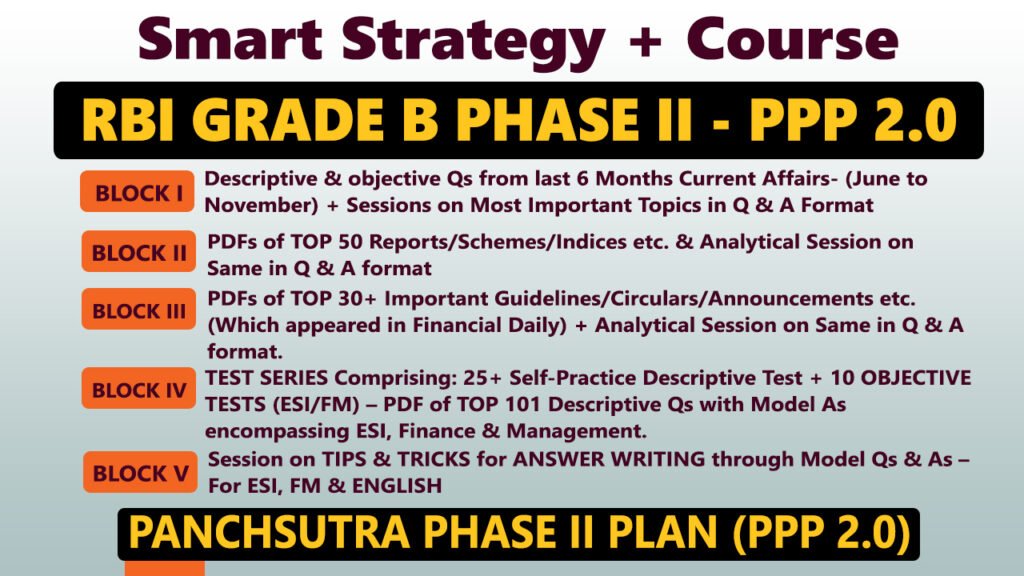Daily Current Affairs Quiz
30 July, 2025
National Affairs
1. Pralay Quasi-Ballistic Missile
Context:
The Defence Research and Development Organisation (DRDO) successfully conducted two back-to-back flight-tests of the Pralay missile from Dr. APJ Abdul Kalam Island, Odisha, validating its full range capabilities.
What is the Pralay Missile?
- Type: Surface-to-surface quasi-ballistic missile
- Fuel: Solid-propellant
- Purpose: Precision conventional strike weapon for battlefield use
- Trajectory: Quasi-ballistic with in-flight manoeuvrability to evade interception
Development
- Lead Lab: Research Centre Imarat (RCI), Hyderabad
- Collaborating DRDO Labs:
- Defence Research and Development Laboratory (DRDL)
- Advanced Systems Laboratory (ASL)
- Industry partners: Bharat Dynamics Ltd. (BDL), Bharat Electronics Ltd. (BEL)
Features and Capabilities
- Range: Up to 500 km
- Warhead Capacity: Up to 1000 kg (unitary or cluster munitions)
- Guidance System:
- Inertial Navigation System (INS)
- Satellite-based augmentation
- Accuracy: High precision with manoeuvrable trajectory
- Mobility: Road-mobile, quick-launch system for fast tactical deployment
2. India’s Gini Index Score
Context:
India was recently ranked among the world’s most equal societies based on the Gini Index, scoring 25.5, placing it in the moderately low inequality category. However, this stands in stark contrast to the multiple forms of inequality that continue to shape everyday life in India.
What is the Gini Index?
- A statistical measure of income inequality ranging from 0 (perfect equality) to 100 (perfect inequality).
- Lower values suggest a more equal distribution of income.
Key Concerns and Highlights:
- Mismatch Between Data and Reality:
- The Gini Index under-reports inequality due to its reliance on limited formal tax and income data.
- India’s large informal economy and non-taxable income segments are excluded, creating a distorted picture.
- Wealth Inequality:
- In 2022–23, the top 1% held 22.6% of national income, according to the study “Income and Wealth Inequality in India, 1922–2023.”
- The absence of comprehensive wealth data further masks the extent of inequality.
- Gender Inequality:
- Women account for only 35.9% of the workforce.
- At senior and middle management levels, representation drops to 12.7%.
- Only 7.5% of startups are run by women, despite India having the world’s 3rd largest startup ecosystem.
- Digital Inequality:
- Only 52.7% schools have functional computers; just 53.9% have internet access.
- Combined household broadband access across India is 41.8%.
- In rural areas, only 25% of women have internet access, compared to 49% of men.
- Interlinked Inequalities:
- Digital inequality fuels educational inequality, especially during virtual schooling phases due to weather or pollution.
- Gender gaps in digital access restrict women’s access to financial services, job opportunities, and information, compounding gender and economic inequality.
3. Kaziranga National Park
Context:
On Global Tiger Day 2025, the Chief Minister of Assam released the latest tiger density rankings, where Kaziranga Tiger Reserve (KTR) emerged as India’s third-most tiger-dense reserve, after Bandipur and Corbett.
What is Tiger Density?
- Definition: Tiger density measures the number of tigers per 100 sq. km, serving as a key ecological indicator of habitat health and predator-prey balance.
Top 3 Tiger Reserves by Density (as of 2024)
| Rank | Tiger Reserve | State | Density (Tigers/100 sq. km) |
|---|---|---|---|
| 1 | Bandipur Tiger Reserve | Karnataka | 19.83 |
| 2 | Corbett Tiger Reserve | Uttarakhand | 19.56 |
| 3 | Kaziranga Tiger Reserve | Assam | 18.65 |
- Kaziranga’s Tiger Population (2024):
Total: 148 tigers over 1,307.49 sq. km- Up from 104 in 2022
- Includes 27 tigers from newly surveyed Biswanath Division
About Kaziranga National Park & Tiger Reserve
- Location:
- Golaghat and Nagaon districts, Assam
Situated along the Brahmaputra River floodplains
- Golaghat and Nagaon districts, Assam
- Historical Milestones:
- Established: 1905 on recommendation of Mary Curzon
- UNESCO World Heritage Site: Since 1985
- Declared Tiger Reserve: In 2006
- Ecological Features:
- Lies on the edge of the Eastern Himalayan biodiversity hotspot
- Habitat: Tall elephant grass, tropical moist forests, and marshlands
Flora
- Vegetation Types:
- Alluvial grasslands
- Savanna woodlands
- Moist deciduous forests
- Semi-evergreen forests
- Notable Trees:
- Elephant Apple, Cotton Tree, Indian Gooseberry
Fauna
- Flagship Species:
- One-horned rhinoceros: Largest population globally (2,200+)
- Tigers: Rising population, third-highest density in India
- Other wildlife: Asiatic elephants, swamp deer, Hoolock gibbons, greater adjutant, black-necked stork
4. New Harappan Site Unearthed in Rajasthan’s Thar Desert
Context:
In a landmark archaeological breakthrough, a new Harappan site has been discovered at Ratadiya Ri Dheri in Jaisalmer district, Rajasthan, marking the first Indus Valley Civilisation (IVC) settlement in the Thar desert’s arid core.
Key Highlights:
Location and Significance:
- The site lies 60 km from Ramgarh tehsil and 17 km from Pakistan’s Sadewala, connecting previously known Harappan locations in northern Rajasthan and Gujarat.
- It expands the known geographic footprint of the Indus Valley civilisation deeper into the desert interior, south of the earlier site at Pilibanga.
Artefacts and Features Found:
- Red ware pottery including bowls, pots, and perforated jars.
- Clay and shell bangles, terracotta objects, wedge-shaped bricks, and chert blades.
- Presence of circular kilns with central columns similar to designs at Kanmer (Gujarat) and Mohenjo-daro (Pakistan).
Dating and Interpretation:
- The site belongs to the Mature Harappan period (2600–1900 BCE).
- Likely a small rural settlement linked to Sindh’s Harappan network, showing signs of regional trade and material integration.
Historical Context:
- The discovery helps bridge the archaeological divide between the Harappan settlements of northern Rajasthan (like Kalibangan and Pilibanga) and Gujarat, enriching our understanding of IVC’s spread and adaptability in harsh desert environments.
Banking/Finance
1. IMF Upgrades India’s FY26 Growth Forecast to 6.4%
Context:
The International Monetary Fund (IMF) has raised its GDP growth forecast for India for FY2025-26 (FY26) to 6.4%, up from 6.2% projected in April 2025, as per the July 2025 World Economic Outlook (WEO) update.
Key Highlights:
- India’s revised projections:
- FY26 GDP growth forecast: Revised to 6.4% (↑ 20 basis points from April)
- FY27 GDP growth forecast: Revised to 6.4% (↑ 10 basis points)
- Reasons for upward revision:
- Benign external environment
- Lower inflation, especially due to falling food prices
- Suspension of higher tariffs
- Continued reform momentum supporting robust consumption and public investment
- Structural priorities for India (IMF recommendations):
- Foster job creation and reskill excess agricultural labor
- Invest in infrastructure and remove trade restrictions
- Long-term reforms in education, land laws, business regulations, and social safety nets
- Global projections:
- Global GDP growth:
- 2025: 3% (↑ 20 bps from April forecast)
- 2026: 3.1% (↑ 10 bps)
- Global GDP growth:
- Drivers of global resilience (IMF Chief Economist Pierre-Olivier Gourinchas):
- Front-loading of exports to the US amid tariff fears
- Easing financial and monetary conditions due to receding global inflation
- US dollar depreciation (~8% since January 2025)
- Other global and regional growth forecasts (2025):
- China: Revised upward by 80 bps to 4.8%
- Emerging markets & developing economies: 4.1% (2025) and 4% (2026)
- India forecast comparison (FY26):
- Agency FY26 Forecast (%) IMF 6.4, S&P Global 6.5, World Bank 6.6, ADB 6.3, OECD 6.0, India Ratings 6.3, UBS Securities 6.4.
2. RBI Eases Investment Norms for Banks and NBFCs in AIFs
Context:
On July 30, 2025, the Reserve Bank of India (RBI) revised its regulatory framework on investments by regulated entities (REs) — including banks and NBFCs — in Alternative Investment Funds (AIFs), easing certain norms while reinforcing safeguards against indirect loan evergreening.
Key Highlights of RBI’s Revised AIF Norms:
- Overall Cap on Collective Investment:
- Total investment by all REs in a single AIF scheme capped at 20% of the scheme’s total corpus.
- Individual Cap:
- Single RE’s contribution capped at 10% of an AIF scheme’s corpus
- Exclusion of Equity Instruments:
- Equity investments made by AIFs are now excluded from provisioning requirements, easing the burden on REs
- Instruments such as compulsorily convertible debentures (CCDs) and compulsorily convertible preference shares (CCPS) are classified as equity instruments
- Provisioning Mandates:
- If an RE contributes more than 5% to an AIF with downstream non-equity exposure in its debtor company, the RE must make 100% provision for its proportionate exposure
- The provisioning cap is equal to the RE’s direct loan or investment exposure to the same company
- Capital Deduction for Subordinated Units:
- Entire investment in subordinated AIF units must be deducted from capital funds, proportionately from both Tier-1 and Tier-2 capital
- Effective Date:
- Norms will come into force from January 1, 2026, or earlier if adopted per an RE’s internal policy
Objective of the Move
- To prevent regulatory arbitrage via indirect lending through AIFs.
- To mitigate credit and concentration risks from circular or layered exposure to debtor firms.
- To align provisioning norms with risk exposure in indirect investments.
Background
- In December 2023, RBI had barred REs from investing in AIFs with exposure to their own borrowers, following SEBI’s findings on loan evergreening via AIFs
- REs faced difficulties in meeting capital calls, leading to partial easing of norms in May 2024
- The latest norms address industry concerns by:
- Excluding equity-linked exposures from restrictions
- Clarifying definitions around equity instruments and debtor companies
3. SEBI Allows Pilot Testing of Fractional Shares in Innovation Sandbox
Context:
In a significant regulatory development, the Securities and Exchange Board of India (SEBI) has approved a proposal to pilot fractional share trading through its innovation sandbox, marking a possible shift in India’s equity trading framework.
Key Highlights:
- First-of-its-kind approval:
- Bengaluru-based startup Xaults has become the first company allowed to test fractional shares in SEBI’s innovation sandbox.
- Fractional shares defined:
- Fractional shares represent portions of a whole share of a company’s stock or an exchange-traded fund (ETF). Instead of purchasing an entire share, investors can buy a fraction, allowing them to invest amounts that align with their financial goals.
- These are partial units of a stock, enabling small-ticket investments in expensive shares—a model already popular in the United States.
- Custody framework key to approval:
- Xaults proposed that fractional shares be held at the depository level, not broker level.
- This ensures ownership remains with the investor, enabling brokers to offer fractional shares while maintaining transparency and legal clarity.
- Next steps:
- Xaults will demonstrate use-cases to SEBI and market participants over 3–4 months.
- Live testing will commence only if SEBI moves it into the regulatory sandbox phase after evaluation.
Significance
This pilot could democratize stock market access for small investors in India by enabling them to invest in high-value stocks without buying full units, potentially boosting retail participation in capital markets.
4. New Digital Credit Assessment Model for MSMEs
Context:
Announced in the Union Budget 2024–25, the New Digital Credit Assessment Model for MSMEs was officially launched by the Union Finance Minister on 6th March 2025. This model empowers Public Sector Banks (PSBs) to assess creditworthiness of MSMEs using digital footprints instead of traditional document-based methods.
Key Features of the Model:
- In-House Credit Assessment by PSBs:
- Shifts from external assessments to in-house, data-driven evaluations by public sector banks.
- Digital Footprint-Based Scoring:
Banks evaluate MSMEs using digitally verifiable data sources such as:- PAN verification via NSDL
- Mobile/email verification through OTP
- GST data via APIs
- Bank statement analysis through account aggregators
- ITR upload and verification
- Credit bureau checks (CICs)
- Fraud detection APIs
- Automated Loan Journeys:
- Objective decision-making mechanisms for Existing-to-Bank (ETB) and New-to-Bank (NTB) borrowers with system-generated limit assessment.
- Faster Turnaround Time:
- Loan decisions are now made within one day, significantly faster than traditional manual underwriting.
Traditional vs. New Approach
| Aspect | Traditional Model | New Digital Model |
|---|---|---|
| Assessment | Manual, paper-based | Fully digital, automated |
| Data | Physical documents | Real-time digital data via APIs |
| Decision Time | Several days | Within 24 hours |
| Subjectivity | High | Reduced due to rule-based system logic |
| Fraud Risk | Higher risk of misrepresentation | Lower due to system checks and digital verifiability |
Benefits to MSMEs
- Online, paperless application and reduced need for branch visits
- Instant in-principle sanctions and reduced turnaround time (TAT)
- Greater transparency and objectivity in credit decisions
- System-based scorecards aligned with each bank’s credit risk management policy
Implementation & Impact
- Rollout Status: Live across all PSBs, with varying loan amount thresholds.
- Applications Sanctioned (1 April – 15 July 2025):
A total of 98,995 MSME loan applications approved using the new model. - No change in basic eligibility norms, but assessment is simplified and standardized digitally.
5. RBI Launches 111th Industrial Outlook Survey and 46th Services & Infrastructure Survey
Context:
The Reserve Bank of India (RBI) has launched the 111th round of the Industrial Outlook Survey (IOS) and the 46th round of the Services and Infrastructure Outlook Survey (SIOS) to assess the evolving business climate across key sectors of the Indian economy.
Industrial Outlook Survey (IOS) – 111th Round
- Objective: To gauge the business sentiments in the manufacturing sector.
- Coverage Period:
- Current Quarter: Q2:2025–26
- Ensuing Quarter: Q3:2025–26
- Indicators Covered:
- Demand conditions
- Financial conditions
- Employment outlook
- Pricing trends
- Future Outlook: Includes projections for Q4:2025–26 and Q1:2026–27 on key business parameters.
Services and Infrastructure Outlook Survey (SIOS) – 46th Round
- Purpose: To assess business conditions in the services and infrastructure sectors.
- Coverage Period:
- Current Quarter: Q2:2025–26
- Ensuing Quarter: Q3:2025–26
- Parameters Studied: Same indicators as IOS—demand, financial health, employment, and pricing.
- Forward-Looking Perspective: Also collects expectations for Q4:2025–26 and Q1:2026–27.
Importance of These Surveys
- These quarterly surveys help RBI in:
- Monitoring macroeconomic conditions
- Formulating monetary and credit policy
- Understanding sector-specific trends and bottlenecks
6. RBI Lifts Corrective Action Plan on Religare Finvest Limited
Context:
The Reserve Bank of India (RBI) has withdrawn the Corrective Action Plan (CAP) restrictions on Religare Finvest Limited (RFL) with immediate effect, following significant management and governance changes.
Key Highlights:
- Entity Involved:
- Religare Finvest Limited (RFL), a wholly-owned material subsidiary of Religare Enterprises Limited (REL).
- Sector:
- Operates in the affordable housing finance segment.
- Reason for Withdrawal of CAP:
- Change in management and directors at RFL.
- Overall improvement in regulatory compliance and governance.
- Background:
- RBI had imposed CAP on RFL in January 2018 due to regulatory lapses.
- CAP is a supervisory framework to restore financial health in NBFCs and banks with identified risks.
- Recent Development:
- REL received ₹1,500 crore growth capital through preferential allotment at ₹235 per share.
- The investment was led by the Burman family of Dabur, who are the promoter group of REL.
What is the Corrective Action Plan (CAP)?
- A regulatory tool used by RBI to address deteriorating financial performance and governance issues in financial entities.
- Includes restrictions on lending, capital expenditure, dividend distribution, etc., until improvement is achieved.
TET
7. SBI Securities Launches Zero-Fee Intraday Trading Plan ‘ProZero’
Context:
SBICAP Securities Limited, a subsidiary of State Bank of India (SBI), has launched ‘ProZero’, a new trading plan aimed at retail investors, offering zero brokerage on intraday trades.
Key Highlights:
- Plan Name: ProZero
- Launched by: SBICAP Securities Ltd (SBI Securities)
- Features of ProZero:
- Zero brokerage for intraday equity, futures, and options trading.
- No hidden fees or platform charges.
- Accessible via mobile app and web platforms.
- Integrated with SBI Securities’ research and real-time trading tools.
- Other Trading Services:
- Non-intraday trading activities continue under the existing flat fee structure of ₹20 per order.
- Target Audience:
- Fee-sensitive retail traders.
- Experienced high-frequency intraday traders.
- Strategic Goal:
- To enhance market participation among cost-conscious investors while retaining SBI Securities’ research-driven service model.
About SBI Securities
- A full-service stockbroker under the State Bank of India group.
- Offers services in:
- Equity & derivatives trading
- Mutual funds
- Portfolio management
- Wealth advisory
BL
Agriculture
1. NABARD Rural Economic Conditions and Sentiments Survey (RECSS)
Context:
The National Bank for Agriculture and Rural Development (NABARD) released findings from its Rural Economic Conditions and Sentiments Survey (RECSS) conducted in July 2025. This bi-monthly survey highlights a significant rise in rural optimism, marking the highest confidence levels since the survey began in September 2024.
Key Findings of the Survey
- Income Expectations:
- 74.7% of rural households expect their income to increase in the next year, the highest recorded so far.
- In the next quarter alone, 56.4% expect income improvement, and 56.2% anticipate better employment conditions.
- Consumption Trends:
- 76.6% households reported higher consumption over the past year.
- Only 3.2% reported a decline in consumption, the lowest since inception.
- Spending & Savings:
- 65.6% of income is spent on consumption, the highest across all six rounds of the survey.
- Despite rising incomes, the survey noted higher financial savings and reduced borrowings, reflecting better financial behaviour.
- Infrastructure & Welfare:
- 76.1% households observed improved rural infrastructure, while only 2.6% saw any deterioration.
- 10% of average rural household income comes from cash transfers, food & fertilizer subsidies, and other government incentives.
- Credit Behaviour:
- 52.6% of households rely exclusively on formal sources for loans—an all-time high.
- Among informal sources, friends and relatives are more preferred than moneylenders.
Survey Coverage
- Conducted across 600 villages and 6,000 households.
- Covered 28 states and Jammu & Kashmir, representing over 99% of India’s rural population.
About NABARD
- Type: All India Development Financial Institution (DFI)
- Established: July 12, 1982
- Headquarters: Mumbai, Maharashtra
- Chairman: Shaji K V
- Mandate: Supervises RRBs, State Cooperative Banks, and DCCBs, and finances rural infrastructure and development.
2. PACS Computerization Project
Context:
The Government of India, through the Ministry of Cooperation (MoC) and in coordination with NABARD, is implementing a national project to computerize all functional Primary Agricultural Credit Societies (PACS) using an ERP-based common software platform.
Key Highlights:
- Revised Financial Outlay:
- Initially: ₹2,516 crore
- Revised: ₹2,925.39 crore
- Objective:
- To bring all functional PACS under a uniform ERP (Enterprise Resource Planning) software, enabling seamless data capture and integration of credit and non-credit activities.
- Linkage Structure:
- PACS to be linked with District Central Cooperative Banks (DCCBs)
- DCCBs to be linked with State Cooperative Banks (StCBs)
- All tiers coordinated via NABARD
ERP System Capabilities
- Integrated Functional Modules:
- Credit (short, medium, long-term loans), deposits, and accounting
- Non-credit services: PDS, procurement, warehousing, processing units
- Administrative functions: membership, HRM, MIS, CAS
- Support for Kisan Credit Card (KCC), RuPay integration, and digital payments
- Benefits:
- Faster loan processing
- Reduced transaction costs
- Transparent operations and governance
- Improved linkage with DCCBs and StCBs
- Empowerment of digitally less-literate small and marginal farmers through training and handholding
Integration with Other Government Schemes
PACS are being developed as multi-service delivery hubs with integration into:
- Pradhan Mantri Kisan Samriddhi Kendras (PMKSK)
- Common Service Centres (CSCs)
- Pradhan Mantri Bhartiya Janaushadhi Kendras (PMBJK)
- Fertiliser & seed distribution
- Public Distribution System (PDS)
- LPG/Fuel dealerships, Custom Hiring Centres
- Kisan Rin Portal and other national agri-credit platforms
3. NABARD Launches First Carbon Credit Pilot with 3,500 Mango Farmers in Karnataka
Context:
NABARD’s consultancy arm, NABARD Consultancy Services (NCB), has initiated its first pilot carbon credit project in Karnataka’s Koppal district, aiming to integrate climate finance with rural agriculture.
Key Highlights:
- Pilot structure:
- In collaboration with Karnataka’s horticulture and forest departments, the project focuses on biomass management and border tree plantations for farmers with mango orchards less than five years old.
- Around 3,500 mango farmers are participating, with free saplings supplied by the forest department.
- Carbon credit potential & payouts:
- However, compliance, auditing, and assessment delays have slowed initial payouts, though officials expect uptake to improve post first disbursement.
- Criticism and farmer concerns:
- Local farmer groups have labelled the initiative as exploitative and poorly communicated, citing lack of clarity and delayed benefits.
- Scaling carbon finance in agriculture:
- With a voluntary domestic carbon market expected soon, experts highlight the need for cooperative models and transparency to properly harness agriculture as a climate finance frontier.
Significance
This pilot marks NABARD’s pivot into carbon markets, bridging rural farming with climate action. It is supported by global funders like Rabo Bank, and aligns with India’s move toward climate-smart agriculture.
Facts To Remember
1. India alongside Japan, Taiwan and Vietnam for Women’s Asian Cup
India was on Tuesday drawn with powerhouse Japan, former champion Taiwan and Vietnam in Group-C of the AFC Women’s Asian Cup to be held in Australia next year.
2. NASA-ISRO joint satellite NISAR set for launch today
IN ONE of its most anticipated missions in recent years, the Indian Space Research Organisation (ISRO) will launch NISAR (NASA-ISRO Synthetic Aperture Radar), a sophisticated and expensive earth observation satellite developed in collaboration with NASA, from Sriharikota.
3. Operation Shivshakti
The Indian Army killed two terrorists who attempted to infiltrate into the Indian side from across the border in the Poonch district of Jammu and Kashmir, under Operation Shivshakti.
4. Banking, NBFCs, and Gas Supply Services Declared Public Utility Services in Delhi
In a significant administrative move to improve access to justice and reduce pressure on conventional courts, Delhi Lieutenant-Governor V.K. Saxena has approved the inclusion of banking, NBFCs, and gas supply services under the public utility services category.
5. Jashvik Capital Acquires Stake in Pharma SaaS Firm Marg ERP
Private equity (PE) firm Jashvik Capital has acquired a significant stake in Marg ERP, a leading healthcare software-as-a-service (SaaS) provider, for over ₹400 crore. This marks the firm’s fourth investment from its maiden fund with a targeted corpus of $350 million.
6. Index of Industrial Production (IIP)
India’s Index of Industrial Production (IIP) growth slowed to a 10-month low of 1.5% in June 2025, largely due to sharp contractions in mining and electricity output, sectors heavily affected by erratic monsoon activity. The episode raises urgent questions about the need to integrate climate risk into economic data frameworks in India.



















